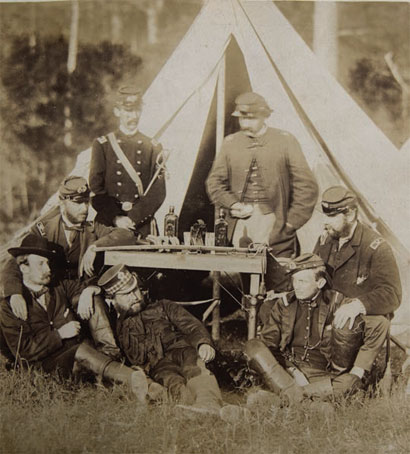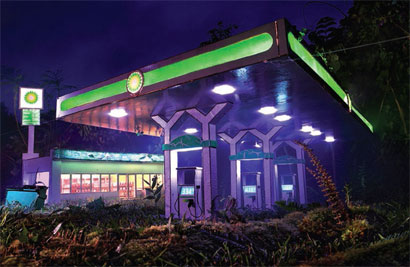
The new Befler Research Building is home to a cancer center, an institute devoted to drug discovery, and more.
Medical College’s Belfer Research Building Opens
In late January, the Medical College unveiled its long-awaited Belfer Research Building, an eighteen-story, $650 million facility that nearly doubles the campus’s lab space. Located on East 69th Street between First and York avenues, the 480,000-square-foot building is devoted to translational research—bringing cures “from bench to bedside.” Its areas of focus include cancer; cardiovascular, metabolic, and neurodegenerative diseases; children’s health; global health; and infectious disease. “The completion of the Belfer Research Building represents a major expansion of Cornell University’s footprint in New York City,” says President David Skorton, who holds appointments in the departments of medicine and pediatrics. “It opens the door to an even greater role for Weill Cornell physicians and researchers in benefiting the health and well-being of New Yorkers and many others around the globe.”
$75 Million Gift Founds Cancer Center at Weill
A $75 million gift from Sandra and Edward Meyer ’48 and their foundation has created the Meyer Cancer Center at the Medical College. Housed in the new Belfer Research Building, it will be led by Lewis Cantley, PhD ’75, a noted cancer researcher recruited from Harvard last year. The center is planned as a hub for such advanced approaches as precision medicine, in which an individual patient’s tumor is screened to create a targeted therapy. Its faculty will comprise basic scientists, pathologists, bioinformaticians, surgeons, radiation oncologists, and more. In honor of the gift, Weill Cornell will name its main building at 1300 York Avenue the Sandra and Edward Meyer Research and Education Building.
Major Expansion Prescribed for Gannett Building
A $55 million expansion of Gannett Health Services is in the works. “We’ve become very adept at making our patients comfortable and ensuring their privacy,” says Gannett executive director Janet Corson-Rikert. “But there is no question that student demand for health services has outgrown the capacity of our Gannett facility to provide the amount and the quality of space needed.” The project, which will bring Gannett’s usable square footage to 52,000 from its current 25,000, is funded in part by a lead gift of $5 million from Board of Trustees Chairman Robert Harrison ’76 and his wife, Jane. Construction is expected to begin in spring 2015 and be completed by summer 2017. The building, which dates from 1956, was last renovated in 1979—to serve a student population that was 5,000 fewer than that of today.

Collector’s item: A rare album of Civil War photographs has a particular curatorial distinction: it’s the University Library’s eight-millionth volume. Compiled for Louis-Philippe d’Orléans, a French count on the staff of a Union Army general, the book includes images by famed photographer Mathew Brady.
Grove Will Mark CU’s 150th
Special landscaping is planned to mark the University’s 150th birthday in 2015. To be installed this summer near the top of Libe Slope, the Sesquicentennial Commemorative Grove will feature trees, benches, and a walkway. It will overlook West Campus and Cayuga Lake, aligned with the A. D. White and Ezra Cornell statues on the Arts Quad. Comprising about 1,700 square feet of plantings, the grove will include a timeline of the University’s history, as well as quotes from notable Cornellians. It begins with the 1862 passage of the Morrill Land Grant Act and runs through 2011, with the winning bid for the New York City tech campus. The project’s cost is estimated at $650,000.
Faculty Senate Calls for Fossil Fuel Divestment
In a vote of 46-13, with two abstentions, the Faculty Senate has adopted a symbolic resolution urging the University to divest its $5.7 billion endowment from the top 200 fossil fuel-holding companies. The move makes Cornell’s the first faculty in the Ivy League to pass such a resolution. “It is our responsibility to act together to strongly encourage the governmental actions that are needed to address the rapidly approaching climate catastrophe,” says molecular biology and genetics professor David Shalloway, one of the measure’s thirty-seven co-sponsors. “The adoption of the resolution by the Faculty Senate demonstrates moral courage that I hope will inspire similar actions at other educational institutions.” In the spring of 2013, the Student Assembly passed a resolution calling for full fossil fuel divestment by 2020; the Graduate and Professional Student Assembly has tabled a similar measure. In a Daily Sun editorial, President David Skorton stated, “We have no plans in the foreseeable future to divest from direct holdings or commingled funds in the fossil fuel industry.” The Faculty Senate resolution also calls for Cornell to revise its Climate Action Plan to set a goal of carbon neutrality by 2035 rather than 2050.
D.C. Strategist Is New VP

Joel Malina
A veteran Washington, D.C.-based communications strategist has been named vice president for university relations. Joel Malina, CEO and general manager of Wexler & Walker Public Policy Associates, will assume the post at the end of March, overseeing Cornell’s government and community relations as well as University communications. “Joel brings to Cornell a superb background in government relations and strategic communications at a time when coordinated approaches and strong partnerships locally, across New York State, in Washington, and around the world will help define our future,” says President Skorton. A Yale graduate, Malina is a former aide to U.S. Rep. Nita Lowey.

Back to the land: Gas BP by David LaChappelle is among the works on display at the Johnson Museum in a show that’s a sequel to the legendary “Earth Art” exhibition held on campus in 1969. Featuring pieces that address such issues as water supply, food justice, and distribution of natural resources, “Beyond Earth Art: Contemporary Artists and the Environment” runs throughout the semester.
Campus Mourns Two Seniors
The University is mourning the deaths of two twenty-one-year-old seniors who passed away early this semester. Milica Mandic, a computer science student in the College of Engineering, died in January in Serbia after an illness. A member of Kappa Delta sorority, Mandic worked on the Sustainable Design engineering project team and interned in the field of industrial automation. In February, Sanya Hashmi passed away after a week in intensive care at Cayuga Medical Center. A biological sciences major, she worked in the Computational Physiology Laboratory, planned to attend medical school, and was an active member of the Muslim Educational and Cultural Association.
Students Develop Phone App to Improve Campus Safety
A free smartphone app for iOS and Android developed by a team of undergrads offers one-stop safety services for the Cornell campus. “We realized that Cornell offers so many services to keep students safe,” says one of the designers, Matthew Laks ’15, “but often students do not know how to connect to these services or have the phone number for them.” The app, dubbed ResCUer, features two buttons. “Get Help” calls up options for campus EMS, police, Gannett Health Services, resident advisers, and Blue Light escorts. “Go Home” offers options for taxis, Blue Light, a map route home, or friends’ phone numbers.
Johnson School Gets Program on Family Businesses
A new effort at the Johnson School will focus on the challenges facing family businesses. Funded by a $10 million gift from a 1974 MBA alumnus and his wife, the John and Dyan Smith Family Business Initiative will be housed in the school’s Entrepreneurship and Innovation Institute. Its first two programs will be a course on the benefits and challenges of family businesses and a lecture series bringing executives from such firms to campus.
New Director Tapped for Cooperative Extension
A horticulture professor has been named director of Cornell Cooperative Extension. Christopher Watkins, formerly associate director of CCE, will serve through October 1, 2017. He’ll complete the term of Helene Dillard, who stepped down to become dean of the ag college at the University of California, Davis. Watkins has been on the Cornell faculty since 1994.
Construction Starts at Cornell Tech Site on Roosevelt Island
Progress on the Cornell Tech campus is moving ahead, with the official signing of the ninety-nine-year lease on the twelve-acre, city-owned parcel executed in December. In January, barges carrying construction materials arrived on Roosevelt Island, home to the new campus set to open in summer 2017. The first order of business is to demolish Goldwater Memorial Hospital, a task that could take up to a year. To follow its progress, go to construction.tech.cornell.edu.
Say ‘Aloha’ to New Plantations Director Christopher Dunn
The new director of Cornell Plantations hails from tropical climes. According to an announcement by CALS Dean Kathryn Boor, Christopher Dunn’s most recent post was at the arboretum at the University of Hawaii, Manoa. “During his tenure there,” Boor reports, “he helped rescue a 193-acre tropical rainforest and botanical garden from near-extinction, with a $3 million renovation project and the establishment of an ecology research center committed to preserving both the biological and cultural diversity of the Pacific region.” Dunn, who starts on April 1, is no stranger to cold weather: he holds an undergraduate degree from SUNY’s College of Environmental Science and Forestry—located in Syracuse—as well as a master’s in plant ecology from Indiana State University and a PhD from the University of Wisconsin, Milwaukee.


